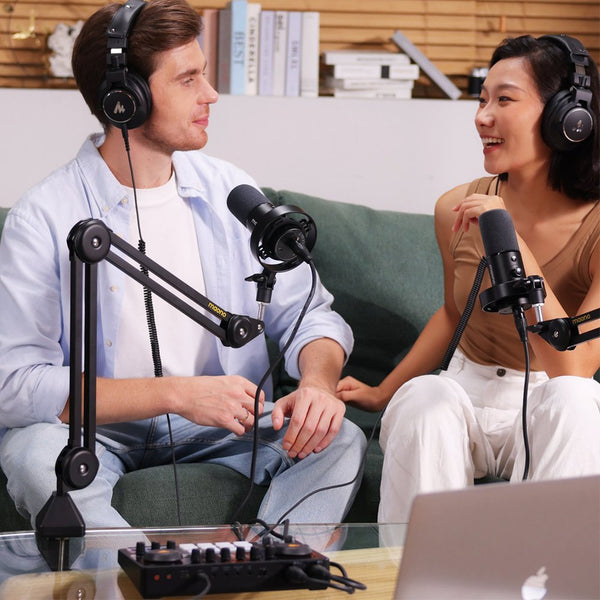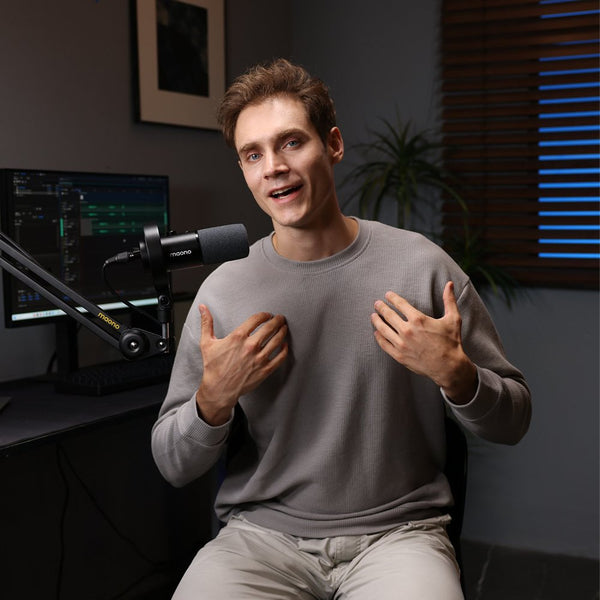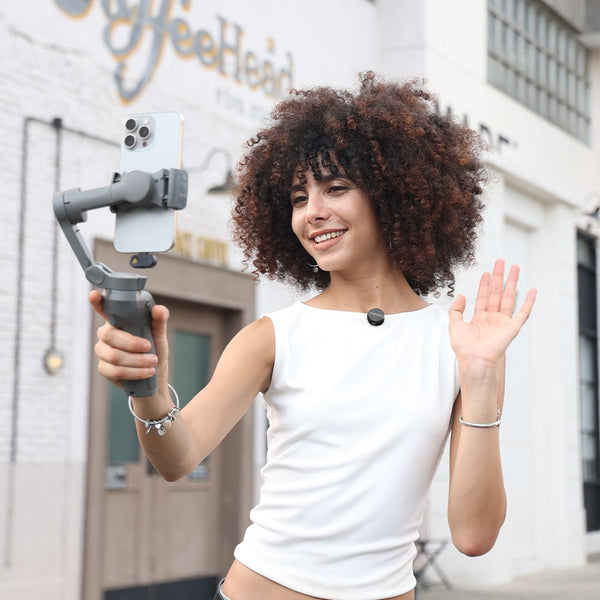In the world of digital audio, the term voice filter is becoming increasingly common, especially among creators, gamers, and professionals who work with audio on a daily basis. Whether using a USB mic or a dynamic microphone known for its durability and focused sound pickup, voice enhancements are now a standard part of many setups. But what exactly is a voice filter, and why is it gaining popularity?
A voice filter is a digital tool or software feature that modifies, enhances, or alters your voice in real time or during post-production. These filters can range from subtle adjustments like reducing background noise and adjusting pitch to more dramatic effects like making your voice sound robotic, cartoonish, or gender-swapped.
People often confuse voice filters with voice changers, but there’s a subtle distinction. A voice filter generally refers to tools used to enhance or shape vocal audio for better quality or a different tone. A voice changer, on the other hand, is used more for transformation, allowing you to sound like someone or something entirely different.
Who Uses Voice Filters? From Gamers to Content Creators
Voice filters are not just niche tools anymore—they’re used by a wide range of individuals and industries.
Gamers use voice filters during live streams or multiplayer sessions to add character or anonymity. Some like to change their voices to match the character they’re roleplaying in a game, while others may do it simply for fun or content engagement.
Content creators—especially those making videos for platforms like YouTube, TikTok, or Instagram—use voice filters to enhance the entertainment value of their content. Adding a humorous filter or emphasizing certain vocal effects can dramatically improve audience engagement.
Voice actors and performers also utilize filters during production. While most rely on raw talent for character voices, filters can provide a final touch in post-production or help create otherworldly or mechanical tones not easily produced naturally.
What Scenarios Can You Use a Voice Filter for Microphone?
There are countless scenarios where voice filters can play a valuable role:
-
Live game streaming
Modify your voice to match in-game characters.
-
Podcasts
Enhance your vocal tone for clarity, remove sibilance or hiss.
-
Online meetings
Disguise your voice for anonymity or humor.
-
Music production
Add creative effects like distortion or pitch shifts.
-
YouTube storytelling
Distinguish characters using different vocal textures.
-
Virtual classrooms
Add playfulness or maintain focus during presentations.
How to Use a Voice Filter
Using a voice filter depends on the setup you're working with. For most creators, filters can be applied through:
-
Streaming software like OBS Studio or Streamlabs (with plugins or add-ons)
-
Voice changer applications such as Voicemod, MorphVOX, or Clownfish
-
Built-in microphone features (some USB mics like Maono models include onboard filter options)
-
Audio editing software such as Adobe Audition or Audacity for post-production
Many USB microphones now come with voice filter or voice changer modes, making it easier than ever to apply effects without needing external software. If you're on a budget, pairing a best budget dynamic microphone with software-based filters is a great starting point.
Why Streamers and Podcasters Rely on Voice Filters Today
With increased competition in content creation, voice filters have become essential tools for podcasters and streamers looking to stand out.
They allow creators to:
-
Maintain a consistent and professional-sounding audio tone
-
Add humor or personality to their content
-
Create distinct voices for multiple characters in storytelling formats
-
Mask their identity or gender for privacy or performance reasons
Why Would Someone Use a Voice Changer?
While filters enhance voice quality or alter tone, voice changers are used for full transformation. People may use them to:
-
Roleplay different genders or ages
-
Maintain anonymity during live sessions or prank calls
-
Create voices for sci-fi or fantasy characters in productions
-
Explore different vocal identities (especially for individuals with voice dysphoria)
Which Maono Microphone Features a Voice Changer?
For those looking for a plug-and-play wireless microphone option, the Maono DM40 is an excellent choice. It’s a cardioid dynamic mic that includes built-in voice changer features. With a simple switch, users can transform their voice in real time, making it ideal for gaming, streaming, and fun online interactions.
Its compact design, durable build, and excellent sound quality make it a favorite among Gen-Z creators and casual streamers alike.
Can You Change Your Voice to Sound Like Someone Else?
Yes, you can—with varying degrees of success. While voice changers can pitch your voice higher or lower and add robotic or echo effects, sounding exactly like someone else is more challenging and typically requires advanced voice modeling software (often AI-driven). However, basic impersonation or character mimicry is easily achievable with mid-tier tools.
What Are the Types of Voice Filters?
Voice filters can be categorized into several types:
-
Pitch shifters – raise or lower vocal tone
-
Gender filters – simulate male or female voice characteristics
-
Robotic/alien filters – for sci-fi effects
-
Environmental filters – simulate different spaces like rooms or halls
-
Distortion/effects filters – for music or comedy use
- Noise reduction filters – clean up audio for professional sound
Noise reduction filters – clean up audio for professional sound
Pairing these with the best dynamic vocal mic can elevate clarity while adding just the right amount of flavor to your sound.
In What Situations Is a Voice Filter Necessary for Privacy?
Privacy is becoming a top concern for many online users. Voice filters offer a solution in scenarios such as:
-
Anonymous gaming or live streaming
-
Participation in sensitive group discussions
-
Remote work environments where identity protection is vital
-
Digital activism or whistleblowing
In these cases, voice filters can mask identity while still allowing real-time communication.
When Should You Use a Voice Filter in a Gaming Session?
A voice filter is useful in gaming when:
-
You’re playing a roleplaying game and want to match your character’s voice
-
You want to remain anonymous or avoid gender-based targeting
-
You’re collaborating with friends on comedic or skit-based content
-
You’re streaming and want to add flair to your audience interaction
Can a Voice Filter Help Mask Accents or Change Language Tones?
To an extent, yes. Some advanced voice filters can smooth out accents or emphasize particular vowel/consonant shapes. However, completely removing or changing a regional accent typically requires voice training or sophisticated AI tools.
That said, many creators use filters to soften heavy accents for international audiences or alter vocal tone to appear more neutral.
What Are Some Creative Uses of Voice Filters in Music Production?
In music, voice filters are used for:
-
Layering vocal effects (e.g., doubling, reverb, delay)
-
Adding robotic or autotune features to vocals
-
Altering pitch to create backing harmonies
-
Creating character voices in skits or conceptual tracks
-
Distortion and FX in EDM, hip-hop, or experimental music
Artists like Daft Punk and Kanye West have famously used vocal filters as key parts of their sound—often paired with a cardioid dynamic mic to reduce unwanted room noise and maintain clarity in layered productions.
When Should You Avoid Using a Voice Filter?
Despite their versatility, voice filters are not always appropriate. You should avoid using them when:
-
Authenticity matters, such as in therapy sessions or serious interviews
-
Technical reliability is crucial, like in official webinars or lectures
-
Your audience expects a natural, personal connection
-
Filters cause distraction or reduce clarity in communication
Overusing filters may also come off as gimmicky if not aligned with your brand or message.
What Maono Microphone Has a Voice Filter?
If you’re looking for a professional-grade mic with built-in voice filter features, consider the Maono PD300X. This USB/XLR hybrid dynamic microphone offers:
-
Multiple onboard 4 voice preset modes
-
High-quality noise reduction and high-pass filters
-
Real-time voice monitoring
-
Compatibility with Maono software for custom filter control
It’s ideal for streamers, podcasters, and creators who want the flexibility of enhanced voice control without complicated setups. And best of all, it’s considered one of the best budget dynamic microphone options in its class.
Conclusion
Voice filters are more than just gimmicks—they're powerful tools that serve both creative and practical purposes. Whether you're a content creator looking to entertain your audience, a podcaster aiming for polished audio, or someone who values online privacy, voice filters can help you take your audio game to the next level.
From Maono’s DM40 for casual streaming to the PD300X for pro-level voice shaping, modern microphones are making voice filters more accessible than ever. As the demand for better, clearer, and more unique audio rises, voice filters are fast becoming a must-have in every digital creator’s toolkit.
So, whether you're trying to sound like a robot, reduce background noise, or simply stand out from the crowd—there's a voice filter ready to help you do just that. And with tools like a good dynamic microphone or a feature-rich wireless microphone, the possibilities are endless.



